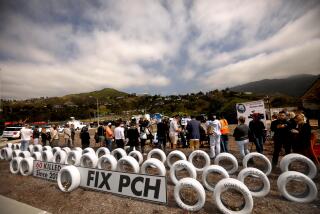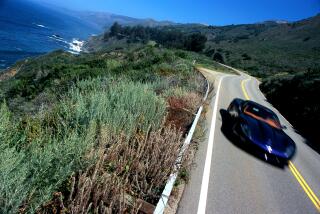Hello on Wheels
- Share via
It landed like a bomb on the California culture, like hearing that sunshine causes heart attacks--that widely publicized report that driving under the influence of a car phone is about as risky as driving drunk.
Yes, the experts warn, anything that reduces a driver’s concentration on the road can increase the chance of an accident--a fact underscored by the recent study in the New England Journal of Medicine linking cellular phones and auto accidents.
But, if you must make calls from the car--and about 5 million Californians do, says the Washington, D.C.-based Cellular Telecommunications Industry Assn.--some common-sense rules can help reduce the risks, according to state law enforcement officials.
“You should be cautious about doing anything that diverts your attention from the road,” said Officer Steve Kohler of the California Highway Patrol. That includes “changing stations on the radio, taking a sip of coffee, trying to light a cigarette or talking on the phone.”
The CHP doesn’t consider car phones--or for that matter, coffee drinking, cigarette smoking and other intra-auto activities--to be “primary” factors in accidents, Kohler said.
The main causes remain activities that are legally forbidden: driving under the influence of alcohol or other drugs, traveling at an unsafe speed, following too closely and unsafe lane changes.
In their study, Dr. Donald A. Redelmeier and statistician Robert J. Tibshirani evaluated 699 Toronto area drivers and found their accident rates were four times higher when they were talking on the phone than when they weren’t. The authors compared the danger to driving with a .08 blood-alcohol level (the legal definition of drunk in California).
An editorial accompanying the study urged phone warning labels, better ergonomic designs for car phones and easy-to-dial toll-free numbers for reporting road hazards and unsafe driving.
“We think those are good suggestions,” said industry association spokesman Tim Ayers of the recommendations. “We are working with the auto industry to integrate phones and automobile audio systems” so there will be no need to hold a phone in the hand. The result, he said, will be “safer, hands-free conversations.”
The CHP, meanwhile, is dispensing its own advice for drivers in a booklet titled “Cellular Mobile Telephone Safety Tips,” which urges:
* Watch and listen--Insist on a phone-safety demonstration, preferably during a test drive at the auto dealer or whenever you have a phone installed.
* Avoid interference--Make sure your phone is installed in a way that doesn’t interfere with normal driving. The device should be within easy reach and be as close to your line of vision as possible.
* Practice makes perfect--Practice using the phone when the car isn’t moving. Familiarize yourself with every feature and function.
* Program frequently--Make sure 911 is programmed into the permanent memory. If you have several calls to make, store the numbers in the memory before heading out.
* Read road conditions--If pavement, weather or road conditions are bad, wait until they improve to place a call.
* Dial safely--Punch in phone numbers at a standstill, such as at traffic lights or stop signs. Dial in short segments. If possible, learn to operate the phone without looking at it.
* Short but sweet--Calvin Coolidge, our 30th president, was a man of few words. The CHP advises that motorists emulate “silent Cal” in phone conversations. Keep them brief.
Brazil, Israel, Switzerland and two states in Australia have banned hand-held phones for drivers. With 34 million cellular phones in the U.S., that isn’t likely to happen here any time soon.
Then again, said the CHP’s Steve Kohler: “We constantly review the accidents we investigate. If we see anything that is an increasing problem, we’ll respond to it.”






